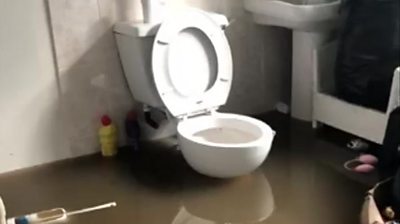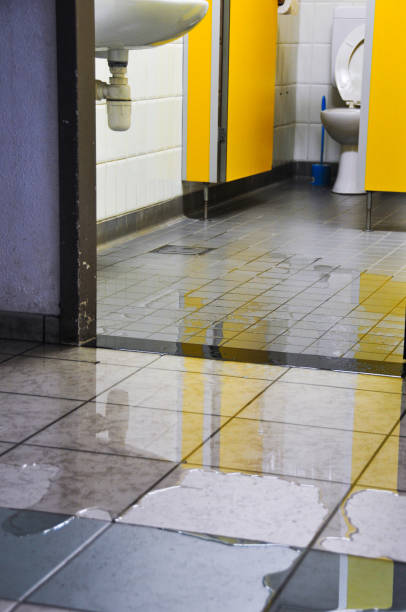Moisture Leads to Destruction in the Bathroom
Moisture Leads to Destruction in the Bathroom
Blog Article
This great article in the next paragraphs involving How to Repair and Prevent Bathroom Water Damage? is rather enjoyable. Check it out for your own benefit and figure out what you think about it.

Water damage usually takes place in the restroom due to the water made use of day-to-day. Sometimes, the damage could be a little mold and mildew from the shower. Various other times, it's massive damage on your floor. Whatever it is, it is always good to understand the reason and also stop it before it happens.
This guide will undergo a few of the usual sources of water damage in the bathroom. We will also examine what you can do to avoid these causes from damaging your restroom. Let's dive in.
5 Typical Sources Of Water Damage in Washrooms
These are the usual factors you would certainly have water damage in your bathrooms and how you can spot them:
Ruptured or Dripping Pipelines
There are several pipes carrying water to various parts of your shower room. Some pipes take water to the bathroom, the sink, the taps, the shower, as well as numerous other areas. They crisscross the tiny area of the restroom.
From time to time, these pipes can obtain corroded as well as ruptured. Other times, human activity might create them to leakage. When this occurs, you'll discover water in the corners of your shower room or on the wall surface.
To detect this, look out for bubbling wall surfaces, mold and mildews, or mold. Call an expert emergency plumbing to fix this when it occurs.
Cracks in your wall surface ceramic tilesv
Shower room wall tiles have actually been specifically designed for that function. They secure the wall from moisture from individuals taking showers. Nevertheless, they are not indestructible.
Occasionally, your washroom wall ceramic tiles crack and also permit some dampness to permeate into the wall. This might potentially damage the wall if you do not take any action. If you discover a fracture on your wall tiles, repair it right away. Do not wait until it damages your wall surface.
Overflowing commodes and also sinks
As people, sometimes we make blunders that could create some water damage in the shower room. For example, leaving your sink tap on can trigger overflowing and damages to various other parts of the washroom with dampness.
Additionally, a malfunctioning toilet might cause overflowing. As an example, a broken bathroom take care of or other parts of the tank. When this occurs, it might harm the flooring.
As soon as you discover an overruning sink or toilet, call a plumber to assist deal with it quickly.
Roofing system Leakages
Sometimes, the issue of water damage to the washroom might not come from the washroom. For instance, a roof leak could trigger damage to the shower room ceiling. You can detect the damage done by taking a look at the water spots on the ceiling.
If you find water stains on your ceiling, examine the roof to see if it's damaged. Then, call an expert to aid address the concern.
Excess Moisture
It's amazing to have that long shower and dash water while you dance around and also act like you're executing, yet occasionally these acts could cause water damage to your bathroom.
Splashing water around can cause water to head to corners and also develop molds. View exactly how you spread excess wetness around, as well as when you do it, clean it up to prevent damage.
Conclusion
Water damage to your restroom can be annoying. However, you can handle it if you protect against several of the reasons stated in this overview. Call an expert emergency situation plumbing professional if you see any kind of extreme damages.
How to Repair a Water-Damaged Wall in the Bathroom
All you need to know to repair bathroom wall water damage – from identifying the water source to finishing the repair professionally. If you don’t act quickly to resolve a water damage problem, you could find that it develops into a mold issue and/or cause structural damage to your home. Follow this guide to repair your bathroom before it's too late.
All you need to know to repair bathroom wall water damage
Water damage is a common household problem, and one that, if left unrepaired, can quickly lead to structural problems and health issues. The two most likely rooms where water damage may occur is the bathroom and the kitchen – where water is used often and there is high humidity.
What is water damage?
It is easy to think of water damage as caused by a flood or leaking tap or burst water pipe. However, when water damage is assessed, there are three main categories into which water falls (as classified by the American National Standards Institute). These categories are defined as:
Category 1 Water – ‘Clear Water’
This is sanitary water. There is usually no major threat to health by washing with this water, drinking it, or inhaling if it is streaming. Most water that enters your home will be category 1 water, while most water leaving your home will be either category 2 or 3 water. It may also come from melting snow, rainwater and water tanks.
Damage caused by this type of water can usually be repaired or restored, though this doesn’t mean that there are no potential health issues.
Category 2 Water – ‘Grey Water’
This is contaminated water – sometimes considerably so – and will cause illness if consumed or if it comes into contact with your skin. Water damage in this category is often caused by overflows from toilet bowls, and damage to washing machines and dishwashers. While damaged items might still be repaired or restored after damage by grey water, it is more difficult and more expensive to do so.
If the water damage in your home has been caused by grey water, it is advisable to have repairs made by professionals.
Over time, grey water will deteriorate and become black water.
Category 3 Water – ‘Black Water’
Category 3 water, also known as black water, is highly contaminated and a great risk to health. This may contain raw sewage, heavy metals, and other toxic substances. It will smell terrible.
If this is the water that has caused damage in your bathroom, do not touch it. Stop the water flowing if possible, seal the room and call the experts: it really isn’t worth the risk of ill health and disease that could be fatal. It is very unlikely that items can be repaired or restored if they have been damaged by black water.
https://www.porterscleaning.com/blog/how-to-repair-a-water-damaged-wall-in-the-bathroom/

How to Repair a Water-Damaged Wall in the Bathroom
All you need to know to repair bathroom wall water damage – from identifying the water source to finishing the repair professionally. If you don’t act quickly to resolve a water damage problem, you could find that it develops into a mold issue and/or cause structural damage to your home. Follow this guide to repair your bathroom before it's too late.
All you need to know to repair bathroom wall water damage
Water damage is a common household problem, and one that, if left unrepaired, can quickly lead to structural problems and health issues. The two most likely rooms where water damage may occur is the bathroom and the kitchen – where water is used often and there is high humidity.
What is water damage?
It is easy to think of water damage as caused by a flood or leaking tap or burst water pipe. However, when water damage is assessed, there are three main categories into which water falls (as classified by the American National Standards Institute). These categories are defined as:
Category 1 Water – ‘Clear Water’
This is sanitary water. There is usually no major threat to health by washing with this water, drinking it, or inhaling if it is streaming. Most water that enters your home will be category 1 water, while most water leaving your home will be either category 2 or 3 water. It may also come from melting snow, rainwater and water tanks.
Damage caused by this type of water can usually be repaired or restored, though this doesn’t mean that there are no potential health issues.
Category 2 Water – ‘Grey Water’
This is contaminated water – sometimes considerably so – and will cause illness if consumed or if it comes into contact with your skin. Water damage in this category is often caused by overflows from toilet bowls, and damage to washing machines and dishwashers. While damaged items might still be repaired or restored after damage by grey water, it is more difficult and more expensive to do so.
If the water damage in your home has been caused by grey water, it is advisable to have repairs made by professionals.
Over time, grey water will deteriorate and become black water.
Category 3 Water – ‘Black Water’
Category 3 water, also known as black water, is highly contaminated and a great risk to health. This may contain raw sewage, heavy metals, and other toxic substances. It will smell terrible.
If this is the water that has caused damage in your bathroom, do not touch it. Stop the water flowing if possible, seal the room and call the experts: it really isn’t worth the risk of ill health and disease that could be fatal. It is very unlikely that items can be repaired or restored if they have been damaged by black water.
https://www.porterscleaning.com/blog/how-to-repair-a-water-damaged-wall-in-the-bathroom/
I was brought to that write-up on How to Repair and Prevent Bathroom Water Damage? through a good friend on a different web blog. You should set aside a second to promote this post if you liked it. Thank you so much for your time spent reading it.
Plumbing crisis? Reach out! Report this page